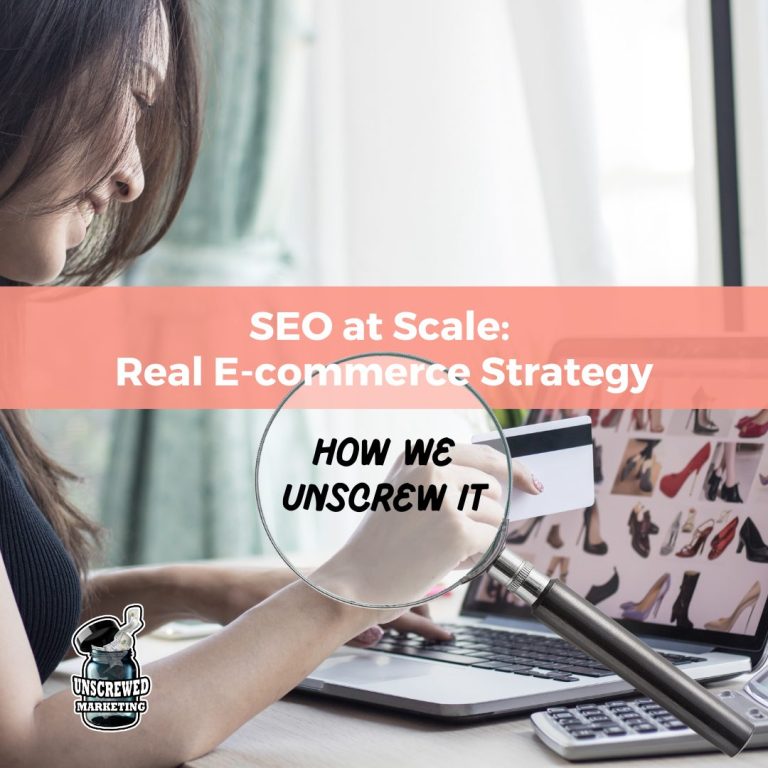- +1 512-591-8295
- [email protected]
- Mon - Fri: 9:00 - 16:00
- +1 512-591-8295
- [email protected]
- Mon - Fri: 9:00 - 16:00
Use code MOM50 at checkout thru Mother’s Day to get 50% off any gift card for marketing services

Right now, I’m elbow-deep in SEO for a client with nearly 50,000 e-commerce products. This isn’t some trendy “optimize a few blog posts” project; it’s a full-on overhaul of their entire product catalog, one smart batch at a time.
The goal? Yes, better SEO. Including the newer AI-driven stuff. But more importantly, I want every product description to be complete and compelling from a customer’s perspective. This isn’t about keywords first, it’s about humans first. That’s how I’ve always approached SEO, and it’s what’s carried my clients through every weird curveball Google’s thrown over the years. Including the current AI-related algorithm updates!
And so far, even with the big AI changes rolling out in search, client results are holding strong. Why? Because we’ve built things right, with substance, not shortcuts.
In this case, I inherited a website that had recently been redesigned, but under the hood, the product descriptions were mostly still the same very brief and generic ones that had been on the site since the 1990s. Yes, they’d been tweaked here and there over the years. But they weren’t robust. And when your product feed pushes to Google Merchant Center, eBay, and other industry sites – which we set up for this client? You need those descriptions to pull their weight independently of (but in lockstep with) your website.
But here’s the part people get wrong: I don’t start with the top-selling products.
Why not? Because those are already performing well. We may be able to move the needle a little bit on those, but not a lot.
Instead, I focus on the next tier; products that are high enough in historical sales to show potential, but not so high that they’re already maxed out. In this client’s case, I’m currently working within the top 3–4% range, not the very top 1%, and not the bottom 20%. Normally we would start with the second decile, but this site is so large that we needed to narrow down that scope even further.
There’s strategy behind that. When you optimize mid-tier products and they move up in sales, it’s a strong signal that your changes are working. It gives us a clean testing ground: if these products gain traction, it’s almost always from the new descriptions and tweaks we’re implementing.
I work in batches of 50–100 products at a time. Once that set is done, I move down to the next range. This keeps the process manageable while ensuring that there’s always forward movement. Always something fresh for both customers and search engines (including AI SEO, SGE, GEO … I don’t think anyone has settled on one term for this new search yet.)
Because let’s be real—Google doesn’t fall for lazy refresh tactics. Even though the site was updated in 2021, and technically all pages show a “newer” date, Google’s smart enough to know when nothing real has changed. Updating product descriptions at this level is one way we send a clear signal: yes, this content is genuinely new.
After each batch, I push those updated product URLs through Google Search Console to speed up re-indexing. Sure, we could wait for Google to recrawl naturally, but why wait when you can give it a nudge? I’ve got a few other tricks to get them indexed faster too—but GSC is the one anyone can use, and it still works well when combined with meaningful updates.
Behind the scenes, we’re also tracking performance using a spreadsheet that pulls in historical sales data and rankings. It’s loaded with formulas that calculate movement pre- and post-update across a six-month window. Once it’s set up, all I have to do is paste in the new data. Easy to manage, and incredibly useful for showing what’s working.
This is the part of SEO most people never see. The long game. The thoughtful systems. The intentionality behind every move.
It’s not flashy—actually it’s boring AF. But it’s effective. And it’s how we turn buried products into bestsellers. Not by guessing. By using real data, real writing, and real strategy to make every product do more of the heavy lifting.
Fractional CMO • SEO Strategist • Website Fixer Over 20 Years
With 20+ years of SEO expertise and 30+ in marketing strategy, I bring a rare combination of technical skill, design insight, and business strategy that most SEO agencies can’t touch. I’ve:
But more importantly: I don’t stop at traffic. I dig in, manually review what others skip when they only run an automated report, and treat SEO as an integral part of your holistic marketing ecosystem. Because showing up in search is just the start. What matters is what happens next.

Vicky Wu, CEO
Author
Curious how you can increase your website traffic?
This website uses cookies to ensure you get the best experience on our website. By continuing to use the website, you agree to our use of cookies. We do not share or sell your information. More info